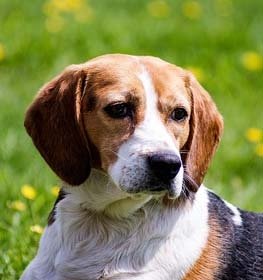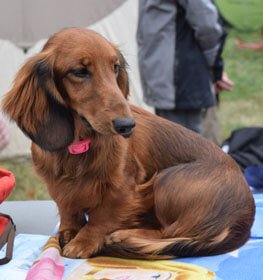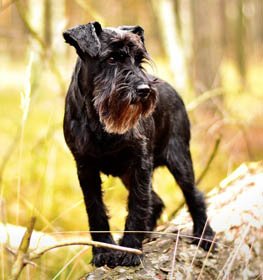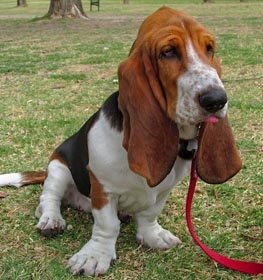Pocket Beagle Information & Dog Breed Facts
Collection of all the general dog breed info about Pocket Beagle so you can get to know the breed more.
| Group | Hunting Dogs |
|---|---|
| Popularity Rank | 620 |
| Reviews | 0 |
| User Ratings | |
|
Compare the Pocket Beagle With Other Dogs
Select at least one dog breed to make the comparsion. | |
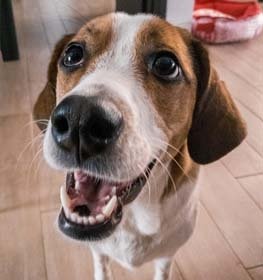 | |
| Origin | |
|
Common Names & Aliases
What other names is a Pocket Beagle known by? Discover all traditional, regional and informal names used for this breed. | Mini BeagleMiniature BeagleOlde English Pocket BeagleTeacup BeagleToy Beagle |
|---|---|
|
Breed Classification
What type of dog breed is a Pocket Beagle? Learn about its genetic classification and breeding category. | Purebred |
|
Size Classification
What size category is a Pocket Beagle? Learn how big the Pocket Beagle breed typically grows. | Small |
|---|---|
|
Weight Statistics
How much does a Pocket Beagle weigh? Discover typical weight ranges for adult males and females of the Pocket Beagle breed. | 8-15 pounds (4-7 kg) |
|
Average Weight
What is the average weight of a Pocket Beagle? | 11.5 pounds (5.5 kg) |
|
Height
How tall is the Pocket Beagle? Pocket Beagle height: | 7-12 inches (18-30 cm) |
|
Average Height
What is the average height of a Pocket Beagle? | 9.5 inches (24 cm) |
|
Price Range
How much does a Pocket Beagle puppy cost? Find current market prices and factors affecting Pocket Beagle costs. | $500-$1500 If you choose to purchase the Pocket Beagle, you should know that the mentioned amount of money is an average of the collected data from breeders’ sites and puppy finder places. If you have a Pocket Beagle for sale, please advertise it on a reliable website to make sure the Pocket Beagle gets to a happy place. |
|---|---|
|
Availability
How easy is it to get a Pocket Beagle? How many Pocket Beagle are there in the world? | Rare: You may rarely see each other in everyday life, but you might catch a glimpse of each other at dog shows. There are very few of them, and there have been times when they have almost drifted to the brink of extinction, so few are left. |
|
Intelligence Rating
How intelligent is a Pocket Beagle? Discover the Pocket Beagle's intelligence ranking and learning capabilities. | Smart: The Pocket Beagle dogs have great intelligence. They understand and memorize new commands in 15-25 repetitions.
The Pocket Beagle is among the smartest dogs in the intelligence ranking. |
|---|---|
|
Training Difficulty
How easy is it to train a Pocket Beagle? Learn about the Pocket Beagle's trainability and response to training methods. | Pocket Beagle dogs are easy to train. They find out the association between commands and actions quite quickly. |
|
Watchdog Rating
How good is a Pocket Beagle as a watchdog? Learn about the Pocket Beagle's alertness and guarding instincts. | Pocket Beagle dogs are good watchdogs. Their main job is to observe and they're consistent in their effort. Good vocal cords and a sense of hearing belong to them. Usually, they're territorial and protective about their property, so the Pocket Beagle dogs will alert you if they sense something different.
|
|
Territorial Protection
Is a Pocket Beagle protective of its territory? Learn about the Pocket Beagle's guarding instincts and behavior. | Pocket Beagle dogs are average defenders. Some dogs are very protective of their territory, while others easily let a stranger to trespass. This breed is not sure to defend its territory in every situation. |
|
Personality Traits
What personality does a Pocket Beagle have? Learn about characteristic Pocket Beagle temperament and behavior traits. | CuriousLovingHappyIntelligentLivelyGentleSociableSweetWatchfulCalmDeterminedBrave |
|---|---|
|
Sensitivity Level
How sensitive are they? Pocket Beagle sensitivity: | They are a little bit more sensitive than other dog breeds. Soft punishment affects them emotionally. Pocket Beagle dogs don't tolerate irregular daily routines, noisy households, and frequent guest visits really well.
They are receptive to their owner's emotions and make wonderful family companions. |
|
Affection Level
How affectionate are they? Is a Pocket Beagle a good family dog? | High: Pocket Beagle dogs are genuinely loyal, soft and gentle, loving, and affectionate dogs toward their handlers. They enjoy quality time with their owners despite the activity and are considered great therapy dogs for those in need. This breed responds strongly to their handler's emotions because they bond closely. Their happiness is your happiness. |
|
Social Needs
How much social interaction does the Mini Beagle need? Pocket Beagle social needs: | Pocket Beagle dogs are a social breed. They enjoy being around people or other animals. This breed doesn't tolerate being left alone. |
|
Impulse to Wander or Roam
How likely is the Pocket Beagle to run away? Does this breed explore or wander a lot? Does Pocket Beagle roam? | Pocket Beagle dogs have high wanderlust potential, which means that this breed has a strong desire for exploring the world. Safer to walk them on a leash unless you teach them how to get back to you on command. This breed is also able to cause damage to your fence. |
|
Prey Drive
Do this canine have a strong prey drive? Does Pocket Beagle have high prey drive? | Pocket Beagle dogs have an average prey drive, which means that they don't have a high impulse to chase and catch something like a cat or any other small aminals, but it might happen. Training can help to achieve good behavior. |
|
Barking Frequency
Does a Pocket Beagle bark a lot? Learn about typical Pocket Beagle vocalization patterns and triggers. | A lot: Pocket Beagle is a particularly loud breed. They often enjoy barking and howling loudly. If you want a quiet dog, not the best choice.
The main triggers for barking are fear, attention, alarm, boredom, greeting, separation anxiety, compulsive barking, and defense. |
|---|---|
|
Playful Nature
How playful is a Pocket Beagle? Understand the typical play drive and energy level of the Pocket Beagle breed. | The Pocket Beagle is a playful breed. Excited barking and sometimes nipping will alert you to play. |
|
Apartment Adaptability
Can a Pocket Beagle live in an apartment? Learn about the Pocket Beagle's suitability for apartment living. | Apartment-friendly dog the Pocket Beagle breed. It is best if you have a small garden where it can occasionally go out to do its business, but this is not important at all. You can exercise him enough with a walk or two a day, so he's comfortable in an apartment. |
|
Lifestyle Adaptability
How adaptable is a Pocket Beagle to lifestyle changes? Learn about the Pocket Beagle's flexibility to new situations. | Average: Pocket Beagle dogs adapt to lifestyle changes and different living environments quite okay usually. |
|---|---|
|
Alone Time Tolerance
Can a Pocket Beagle be left alone? Learn about the Pocket Beagle's tolerance to solitude. | Pocket Beagle dogs do best when a family member is at home during the day or if their workplace is dog-friendly so they can take the dog at work. |
|
Bite Risk Assessment
What is a Pocket Beagle biting potential? Learn about the Pocket Beagle's bite risk factors. | Low 🔽 The Pocket Beagle has a low chance of biting somebody. Top reasons for dog bite: protection, pain, excitement, herding instinct, being provoked. (Data based on the available online bite statistics.) |
|---|---|
|
Mouthing Tendency
Is a Pocket Beagle mouthy? Learn about the Pocket Beagle's tendency to use mouth during play. | Pocket Beagle dogs have a higher than average tendency to nip, chew, playbite, or herd people. It's a common habit during puppyhood, not aggressive behavior. These "bites" don't hurt, but Pocket Beagle dogs need to be taught a good attitude. |
|
Bite Strength Rating
How strong is a Pocket Beagle bite? Learn about the Pocket Beagle's bite force measured in PSI. | Between 100 and 200 PSI 🔽 Pocket Beagle bite force: Weak. The Pocket Beagle bite force is considered weak when compared to other dog breeds. The bite force Pocket Beagle measurements usually fall below 200 PSI, making them one of the breeds with the weakest bite force. The bite force of a Pocket Beagle may be weak, but it's important to remember that any dog's bite can still be dangerous if not managed properly. Despite the bite force of Pocket Beagle being lower, it does not make them any less lovable or enjoyable as pets.
Pocket Beagle bite wounds might not be as severe, but it is still essential to be cautious and prevent any biting incidents. They are usually not aggressive and very friendly towards children and other animals. To ensure a well-behaved dog, it's essential to learn how to train a Pocket Beagle puppy not to bite from an early age. With proper training and socialization, a Pocket Beagle can be a wonderful addition to any family, providing love and companionship for years to come. |
|
Average Lifespan
How long does a Pocket Beagle live? Learn about the typical lifespan of the Pocket Beagle breed. | 9-13 years The average lifespan of Pocket Beagle: 11 years |
|---|---|
|
Climate Tolerance
How well does a Pocket Beagle handle different weather? Learn about the Pocket Beagle's climate adaptability. | Prefers average to warm weather conditions Different dogs have different preferences when it comes to weather conditions. However, in general, most dogs prefer average to warm weather conditions, as they typically find hot weather conditions to be uncomfortable and taxing. |
|
Health Concerns
What health issues are common in a Pocket Beagle? Discover typical conditions affecting the Pocket Beagle breed. | The Pocket Beagle is a healthy breed, but there are certain health issues that you should check with your vet regularly. |
|
Vet Care Frequency
How often does a Pocket Beagle need vet visits? Learn about the Pocket Beagle's veterinary care requirements. | Average The Pocket Beagle should have a complete physical check-up at least once per year. If your dog shows any symptoms, call your veterinarian. |
|
Health Problems
What genetic/health problems does the Pocket Beagle breed have? What are the health issues and concerns of the Pocket Beagle breed? Most common health risks of Pocket Beagle: | Patellar LuxationHypothyroidismEpilepsyIntervertebral Disk DiseaseCryptorchidismBeagle DwarfismChinese Beagle SyndromeEye DiseasesCleft LipCleft PalateCanine Hip Dysplasia (CHD)Funny Puppy SyndromeHermaphroditismEpiphyseal Dysplasia |
|
Energy Rating
How energetic is a Pocket Beagle? Understand daily activity needs of the Pocket Beagle breed. | Pocket Beagle dogs have a higher energy level than other dog breeds. If you want a dog for snuggling on the couch, this breed isn't the perfect choice for you. |
|---|---|
|
Activity Requirement / Exercise Need
How much exercise does a Pocket Beagle need? How much exercise do Pocket Beagle dogs require per day?
Do Pocket Beagle dogs need a lot of exercises? | Pocket Beagle dogs need quite a lot of exercise. Daily walks should be on schedule. If you live an active life, this breed can be a good choice for you. |
|
Sleeping Need
How much sleep does the Pocket Beagle breed need? | Pocket Beagle dogs are quite energetic dogs and they don't spend too much time with sleeping. If you live an active life, this breed can be a good choice for you. |
|
Obesity Tendency
Is a Pocket Beagle prone to weight gain? Learn about the Pocket Beagle's obesity risks. | High: The Pocket Beagle breed has a strong tendency to be overweight. Try to find the happy medium between exercise and feeding. If you want to keep balance, increase the amount and frequency of your daily dog walk and play with the Pocket Beagle more often.
If you notice any weight gain, consult your veterinarian and make a diet plan. Reduce unhealthy food and snacks, and measure the Pocket Beagle weight regularly. |
|---|---|
|
Food Consumption
How much food does a Pocket Beagle need daily? Learn about the Pocket Beagle's feeding requirements. | 1/2 to 1.5 cups of high-quality dry food a day, divided into two meals. |
|
Allergy Friendliness
Is a Pocket Beagle hypoallergenic? Learn about the Pocket Beagle's suitability for allergy sufferers. | No Pocket Beagle dogs don't do well with allergy sufferers by causing allergic reactions. Some dog breeds are even considered to higher possibility of an allergic response. Coat type isn't necessarily relevant, because most people are allergic to dander (flakes on the dog's skin) or saliva, not actually to dog hair. |
|---|---|
|
Coat Colors
What colors does a Pocket Beagle come in? Discover all possible Pocket Beagle color variations. | BlackGrayTan Red Blue Cream White BrownLiverLemon The combination of the colors listed occur. |
|
Grooming Requirements
How much grooming does a Pocket Beagle need? Learn about Pocket Beagle coat maintenance requirements. | Effortless: The Pocket Beagle requires minimal grooming. Seasonal flea treatment is needed, but cutting the dog's hair by a professional groomer isn't necessary. Ears and eyes should be cleaned sometimes to avoid infections. Pocket Beagle is one of the best choices if you don't have the time, skill, or money to take care of a high-maintenance dog. Highly recommended for beginners. |
|
Drooling Tendency
Does a Pocket Beagle drool a lot? Learn about the Pocket Beagle's drooling habits. | The Pocket Beagle is a perfect example of a very low drooling tendency. If you're disgusted by slobber spots on your clothes, the Pocket Beagle could be a perfect choice for you. Drooling is the unintentional saliva flowing outside of the mouth. It can be completely normal or a sign of a health problem. Certain dog breeds drool minimum compared to others, just like the Pocket Beagle.
If you notice any change in your dog's drooling habit, you should contact a vet as soon as possible. |
|
Stinkiness Rating
Does a Pocket Beagle smell bad? Learn about the Pocket Beagle's natural odor levels. | Low 🔽 The Pocket Beagle has a low chance of bad smell. Top reasons for dog stinkiness: infection of bad tooth/ear/skin folds, gas attacks. |
|
Coat Characteristics
What type of coat does a Pocket Beagle have? Learn about the Pocket Beagle's fur characteristics. | SmoothShort |
|
Bathing Needs
How often does a Pocket Beagle need baths? Learn about the Pocket Beagle's bathing requirements. | 6-8 weeks Rarely. Bathing your dog is beneficial to them in more ways than just one. It’s also a good time to look for unusual scratches, bumps, fleas, and other irregularities. When their hair is wet and flat against their body, these details are more visible.
For example, short-haired dog breeds can go a very long time in between baths. These short-haired breeds shed regularly and that shedding works to naturally remove excess dirt and oil. So unless your weenie dog got into the garbage can, you can probably hold off on a bath for a while. |
|
Shedding Level
How much do Pocket Beagle dogs shed? How to control, reduce and prevent the shedding of the Mini Beagle? Do Pocket Beagle dogs shed a lot? | Pocket Beagle dogs shed moderately. It's a natural process of the hair growth cycle. Regular brushing reduces the amount of hair that sheds. It mostly depends on their health status and breed type. |
|
Child Compatibility
Is a Pocket Beagle good with children? Learn about the Pocket Beagle's behavior around kids of different ages. | Pocket Beagle dogs are very kid-friendly dogs. This breed enjoys being surrounded by children.
|
|---|---|
|
Pet Compatibility
How well does a Pocket Beagle get along with other pets? Discover the Pocket Beagle's compatibility with other animals. | Pocket Beagle dogs are usually friendly towards other pets. |
|
Stranger Friendly
Are they aggressive or friendly towards/with strangers? Pocket Beagle temperament with other people: | Pocket Beagle dogs are stranger-friendly dogs. |
|
Cat Friendly
How well do Pocket Beagle dogs get along with cats? Are they good with kittens? What is this fido's temperament with cats? Can they be good with cats? Can the Pocket Beagle breed live with a cat? | Pocket Beagle dogs are cat-friendly dogs. |
|
Dog Friendly
Is Pocket Beagle good with other dogs? Are they dog-friendly dogs? How well do Pocket Beagle dogs get along with other dogs? | Pocket Beagle dogs are very dog-friendly dogs. If you want more dogs in your family or you'd like to join dog meetups, the Pocket Beagle can be a great choice. |
|
Good For First Time Owners
Is Pocket Beagle breed good for first-time owners? Do they make a good dog for novice owners? Is Pocket Beagle breed suitable for first-time owners? | Yes Pocket Beagle dogs are good for novice owners, due to their easy-going personality. |
|
Office Friendly
Are Pocket Beagle dogs good office canines? Do Pocket Beagle dogs make good office-friendly pets? Can they be office dogs? | No Pocket Beagle is not the best dog breed for office environment. |
|
Senior Citizens Friendly
Are they senior citizens friendly dogs? How well do Pocket Beagle dogs get along with the elderly people? What is the Mini Beagle temperament with senior people? Are Pocket Beagle dogs good for elderly owners? | Pocket Beagles are one of the best breeds for elderly people. |
|
Service Dog Capability
Can a Pocket Beagle be a service dog? Learn about the Pocket Beagle's service work potential. | Not really This breed generally not used as a service dog. A service dog is a term used in the USA to refer to any type of assistance dog specifically trained to help people who have disabilities, such as visual impairment, hearing impairments, mental disorders, seizures, mobility impairment, and diabetes. Service dogs are protected under the ADA (Americans with Disabilities Act).
Pocket Beagle is not the best breed for service purposes. |
|---|---|
|
Therapy Work Suitability
Is a Pocket Beagle good as a therapy dog? Learn about the Pocket Beagle's therapy work aptitude. | Not really This breed is generally not used as a therapy dog. A therapy dog is a dog that might be trained to provide affection, comfort, and love to people in hospitals, retirement homes, nursing homes, schools, hospices, disaster areas, and people with anxiety disorders or autism.
Pocket Beagle is not the best breed for therapeutic purposes. |
|
Scent Detection Ability
Is a Pocket Beagle good at detection work? Learn about the Pocket Beagle's scenting abilities. | Not really They are not typically employed for this type of work, but there may be exceptional cases. A detection dog or sniffer dog is a dog that is trained to use its senses (mostly its smell) to detect substances such as explosives, illegal drugs, wildlife scat, currency, blood, and contraband electronics such as illicit mobile phones.
Pocket Beagle is not the best breed for detection purposes. |
|
Search & Rescue Potential
Can a Pocket Beagle do search and rescue? Learn about the Pocket Beagle's SAR capabilities. | Not really This dog breed is not typically used as a search and rescue dog. The use of dogs in search and rescue (SAR) is a valuable component in wilderness tracking, natural disasters, mass casualty events, and locating missing people.
The Pocket Beagle is not the best breed for SAR purposes. |
|
Maritime Work Ability
Is a Pocket Beagle good on boats? Learn about the Pocket Beagle's maritime capabilities. | Not really Pocket Beagle breed usually doesn't like being on a boat. Boat dogs were typically bred for their strength, stamina, and water resistance, as they were often required to perform tasks such as pulling in fishing nets, and jumping into the water to retrieve ropes or lines, or helping to move cargo. Sailor dog is a type of dog that was bred to accompany sailors on their voyages. They were typically used for three purposes: as a working dog, a watchdog, and as a companion. A boat dog is a term used to describe a type of dog that was traditionally bred and used as a working dog on boats. |
|
Draft Work Capability
Can a Pocket Beagle pull carts? Learn about the Pocket Beagle's drafting abilities. | Not really A drafting dog or draft dog is a dog bred and used for cart pulling. Dogs bred for this work have strong builds and qualities that are needed, strength and determination.
Pocket Beagle is not the best breed for drafting purposes. |
|
Military Service Background
Was a Pocket Beagle used in military service? Learn about the Pocket Beagle's military history. | Not really In history, this breed was not really used for combat dog. |
|
Puppy Litter Size
How many puppies does a Pocket Beagle usually have? Learn about typical litter sizes. | 3-5 puppies |
|---|---|
|
Pregnancy Duration
How long is a Pocket Beagle pregnant? Learn about the Pocket Beagle's gestation period. | 60-64 days Reproductive cycle of the female Pocket Beagle: The first period called Proestrus lasts for about 9 days.
During this time the females start to attract males. You can notice by swelling vulva and bloody discharge. The second part is the Estrus when the female is receptive for the male. It lasts for about 3 to 11 days. The sign of the proestrus part is the soft and enlarged vulva. The discharge decreases and lightens in color. The third part is the Diestrus. Normally, it occurs around day 14. In this period the female’s discharge changes for vivid red and coming to its end. The vulva returns to average, and she will no longer permit mating. The fourth part called the Anestrus. The time frame between heat periods normally lasts about six months. |
|
Breeding Frequency
How often can a Pocket Beagle have puppies? Learn about safe breeding intervals. | Once a year. More frequent breeding is not healthy. It is very important not to buy a dog from a puppy mill, where the needs of the pups and their mothers are ignored. It's an inhumane high-volume dog breeding facility, where puppies born several times a year. |
|
AKC Classification
What AKC group is a Pocket Beagle in? Learn about the Pocket Beagle's AKC classification. | Not recognized by the American Kennel Club. |
|---|---|
|
FCI Classification
What FCI group is a Pocket Beagle in? Learn about the Pocket Beagle's international classification. | Not recognized by FCI. |
|
Kennel Club Recognition
Which kennel clubs recognize a Pocket Beagle? Learn about the Pocket Beagle's official recognition. | Dog Registry of America Inc.American Canine Association, Inc. |
Pocket Beagle Pros and Cons
- Intelligence Rating: Smart: The Pocket Beagle dogs have great intelligence.
- Training Difficulty: Pocket Beagle dogs are easy to train.
- Apartment Adaptability: Apartment-friendly dog the Pocket Beagle breed.
- Grooming Requirements: Effortless: The Pocket Beagle requires minimal grooming.
- Drooling Tendency: The Pocket Beagle is a perfect example of a very low drooling tendency.
- Stinkiness Rating: The Pocket Beagle has a low chance of bad smell.
- Watchdog Rating: Pocket Beagle dogs are good watchdogs.
- Child Compatibility: Pocket Beagle dogs are very kid-friendly dogs.
- Cat Friendly: Pocket Beagle dogs are cat-friendly dogs.
- Dog Friendly: Pocket Beagle dogs are very dog-friendly dogs.
- Senior Citizens Friendly: Pocket Beagles are one of the best breeds for elderly people.
- Good For First Time Owners: Pocket Beagle dogs are good for novice owners, due to their easy-going personality.
- Allergy Friendliness: Pocket Beagle dogs don't do well with allergy sufferers by causing allergic reactions.
- Obesity Tendency: High: The Pocket Beagle breed has a strong tendency to be overweight.
- Mouthing Tendency: Pocket Beagle dogs have a higher than average tendency to nip, chew, playbite, or herd people.
- Impulse to Wander or Roam: Pocket Beagle dogs have high wanderlust potential, which means that this breed has a strong desire for exploring the world.
- Alone Time Tolerance: Pocket Beagle dogs do best when a family member is at home during the day or if their workplace is dog-friendly so they can take the dog at work.
- Office Friendly: Pocket Beagle is not the best dog breed for office environment.
Pocket Beagle History
The exact origin of the word “beagle” is uncertain however, we have a very detailed and rich historical background both for the Beagle and for the Pocket Beagle. It is presumed that it may have been derived from the Old English word “beag”, meaning small, or from the French word “beguile”, meaning open throat. Others state that it may have come from the German word “begele” which translates to scold.
The breed’s history starts at the very early ages, Greek documents from B.C. 400 describe Beagle resembling dogs. Furthermore, the Romans might have brought small rabbit-hunting hounds with them to England and bred them with local hounds to improve the dogs’ hunting capabilities. In 1066, during the Norman Conquest, William the Conqueror reportedly brought Talbot hounds, which are now extinct, to England. These dogs are considered to be the earliest ancestors of the Beagle and the Foxhound. Beagles quickly found their fanciers in England at the beginning of the Middle Ages. Between 1307 and 1327 during the reigns of Edward II. and during Henry VII. ’s reigns between 1485 and 1509, extremely small Beagles, also called Glove Beagles were more in fashion. Elizabeth I. kept packs of Pocket Beagles who stood only 9 inches tall. These small dogs were portrayed in paintings as short-legged and pointy-nosed. These dogs were mainly used for hunting, yet they quickly got replaced by the more talented and faster hound breeds.
As hunting for fox became popular in the 1700s in England, and the Beagle was displaced by the Foxhound. Thank the farmers in Wales, England, and Ireland, who continued to keep packs of Beagles to hunt hare, rabbit, and other vermin, the breed was saved from the edge of extinction. Reverend Phillip Honeywood, in the mid-1800s, established a pack of Pocket and other small-sized Beagles in Essex, England. Reverend Honeywood bred the dogs for hunting purposes, not for their looks. Yet a fellow Englishman named Thomas Johnson got included in the breeding process, his intention was to put more attention to the dogs’ exterior looks. At the exact same time in America, breeders started importing Beagles to improve their looks too. Many of these imported dogs were bred at a height of 15 to 17 inches in order to hunt fox, but American breeders wanted to make the breed smaller to better hunt rabbits. Of interest among these rabbit-hunters is the "Patch" Beagle strain, which was developed by Willet Randall in New York around 1880. In the 1940s and 1950s, they were largely widespread because they were able to run very fast.
In 1884, the AKC (American Kennel Club) recognized the Beagle, yet it does not recognize a variety called the Pocket Beagle. Technically, the Pocket Beagle qualifies as a 13-inch Beagle, which is defined by the Beagle breed standard as any Beagle that doesn't exceed 13 inches in height at the shoulder and typically weighs 15 to 18 pounds. Nowadays the Beagles got two different height classes; from 13 inches to smaller, and between 13 and 15 inches.

